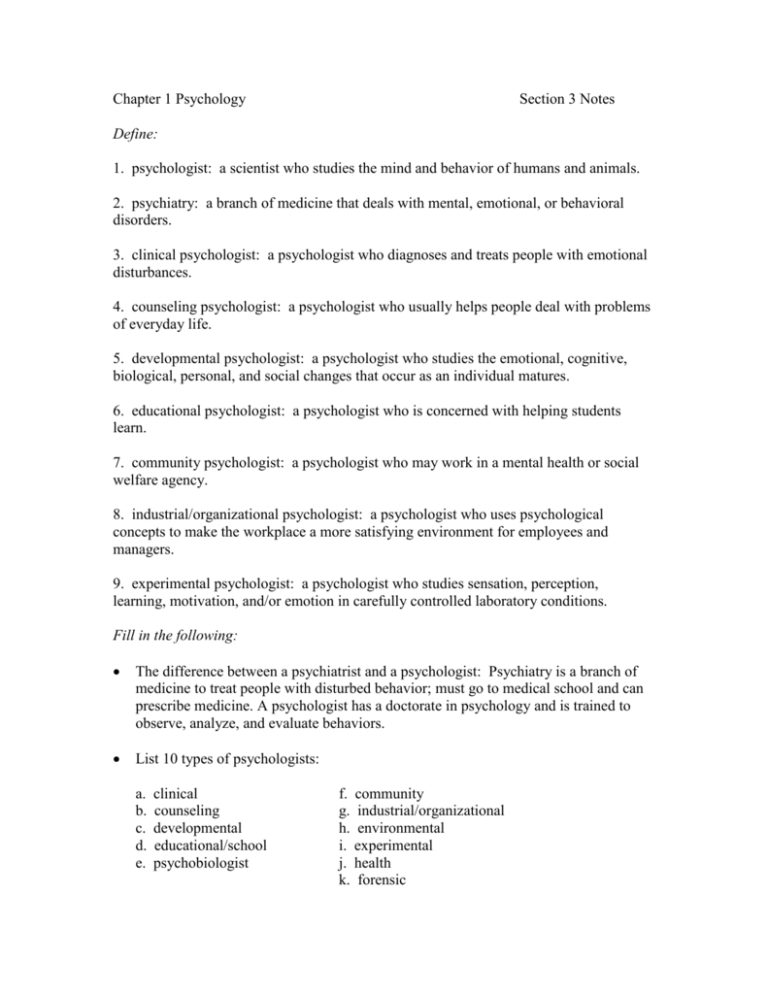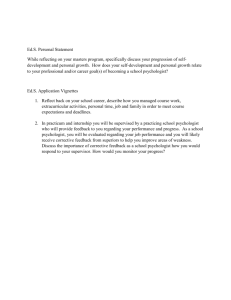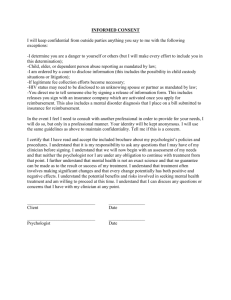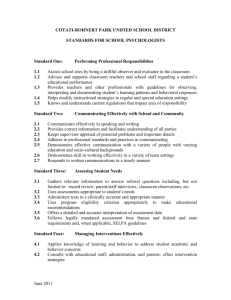Chapter 1 Psychology - Collier Middle School
advertisement

Chapter 1 Psychology Section 3 Notes Define: 1. psychologist: a scientist who studies the mind and behavior of humans and animals. 2. psychiatry: a branch of medicine that deals with mental, emotional, or behavioral disorders. 3. clinical psychologist: a psychologist who diagnoses and treats people with emotional disturbances. 4. counseling psychologist: a psychologist who usually helps people deal with problems of everyday life. 5. developmental psychologist: a psychologist who studies the emotional, cognitive, biological, personal, and social changes that occur as an individual matures. 6. educational psychologist: a psychologist who is concerned with helping students learn. 7. community psychologist: a psychologist who may work in a mental health or social welfare agency. 8. industrial/organizational psychologist: a psychologist who uses psychological concepts to make the workplace a more satisfying environment for employees and managers. 9. experimental psychologist: a psychologist who studies sensation, perception, learning, motivation, and/or emotion in carefully controlled laboratory conditions. Fill in the following: The difference between a psychiatrist and a psychologist: Psychiatry is a branch of medicine to treat people with disturbed behavior; must go to medical school and can prescribe medicine. A psychologist has a doctorate in psychology and is trained to observe, analyze, and evaluate behaviors. List 10 types of psychologists: a. b. c. d. e. clinical counseling developmental educational/school psychobiologist f. community g. industrial/organizational h. environmental i. experimental j. health k. forensic List six places where psychologists work: a. academic institutions (colleges) b. business and government c. hospitals and clinics d. independent practice e. counseling and guidance centers f. school systems The American Psychological Association (1892) APA scientific and professional society of psychologists and educators; works to advance the science and profession of psychology and to promote human welfare. There are 54 divisions in the APA, representing a specific area, type of work or research setting, or activity. Chart, p. 27




